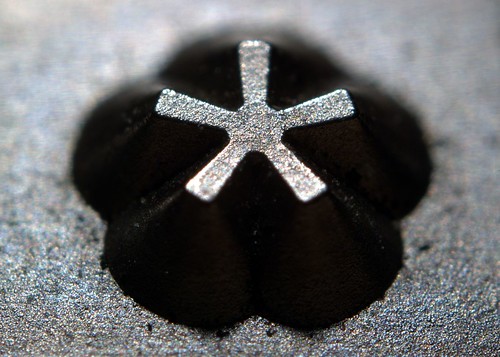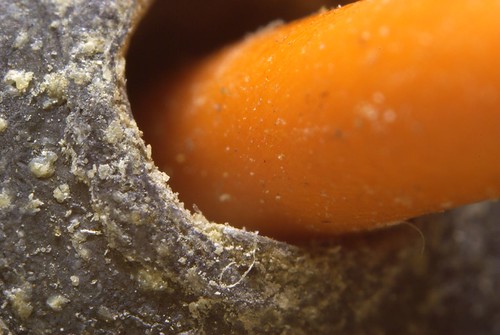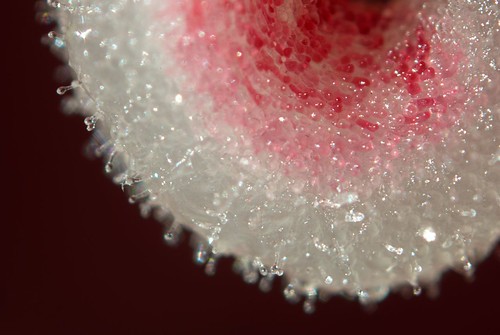Here's a practical example of how to determine macro magnification, cooked up by me. I consulted no guides for this, I just felt like getting the way I do it out of my head.
For instance:
A typical APS-C imaging sensor is 23.6*15.7mm.
A typical 10.2Mp sensor gives an output of around 3896*2616 pixels, so you can say that's (3896 / 23.6) = 165 pixels per mm of sensor.
Thus a 1:1 macro lens would theoretically reproduce 1mm as 165px wide on a 10.2Mp sensor. We'll call this the pixel factor.
(Naturally you can calculate your own depending on the size of sensor and megapixel count.)
a = the physical object's width in mm. The measurement should ideally be on a level horizontal plane relative to the camera.
b = the object's width in pixels from the captured image.
p = pixel factor.
M = the magnification factor.
M = b / pa
I think this is correct... Let's test.
You measure a bead with a micrometer - it measures 4.3mm . You put it in front of your macro setup and take a picture. (a = 4.3)
You load the image into Photoshop. You find out using the measure tool that the bead is 2433 pixels wide. (b = 2433)
You're using a K10D, so your pixel factor is 165. (p = 165)
2433 / (165*4.3) =
3.4
So in this case, the magnification ratio is 3.4:1.
If anyone wants to criticise this, feel free. I'm not completely sure of it myself!



 Similar Threads
Similar Threads 





























